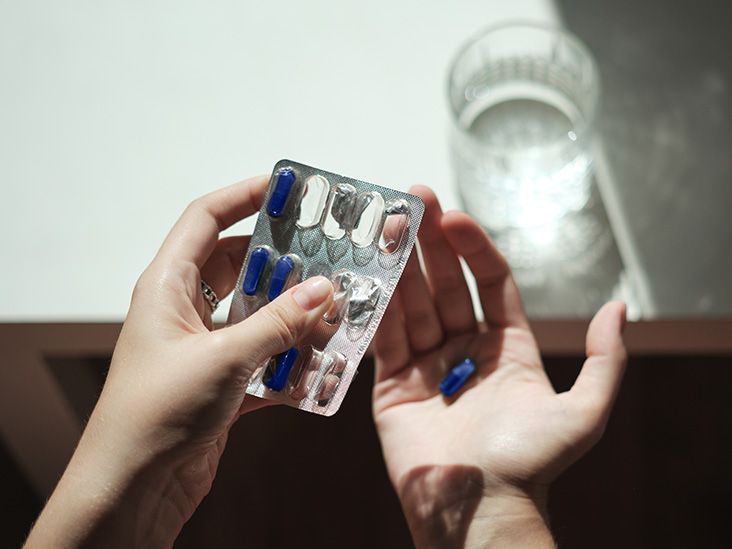Shingles pain and other symptoms typically develop in stages over several weeks. These stages tend to have a somewhat predictable pattern and typically resolve in a few weeks.
Shingles is an infection that results from the varicella-zoster virus. This is the same virus that causes chickenpox. Shingles occurs when a person who has previously had chickenpox experiences a reactivation of the varicella-zoster virus.
This article outlines the symptoms of shingles and provides a timeline of pain stages. It also provides information on treating and preventing shingles and discusses when to contact a doctor.

The characteristic symptom of shingles is a painful rash.
According to the
Some common areas for these rashes to appear include:
- the forehead and scalp
- the shoulder and neck
- the upper or lower abdomen
People who have weakened immune systems may develop a widespread rash that resembles chickenpox.
In addition to a blistering rash, a person may develop the following symptoms:
Shingles pain typically progresses in predictable stages. The sections below outline the typical timeline for shingles pain.
Prodromal stage
In medical terms, the prodromal stage is between the initial appearance of symptoms and the full development of symptoms.
The prodromal stage for shingles may last anywhere from
During this stage, a person may experience the following:
Active stage
Shingles rashes typically change from a red rash to fluid-filled blisters within a matter of days. The blisters typically begin to crust over within
In most cases, the scabs heal within 2 weeks.
Postherpetic neuralgia
Postherpetic neuralgia refers to pain that persists once the shingles rash has cleared. About
Postherpetic neuralgia typically occurs in the same area the rash appeared.
It may lead to other complications, such as:
- disturbed sleep
- depression
- anxiety
- weight loss
Postherpetic neuralgia is
Shingles can last for up to
- 1–5 days: A person may experience tingling sensations on one side of the body or head.
- 1–5 days: Areas of tingling may become painful or flushed in appearance.
- The next 7–10 days: A person experiences painful blisters.
- Within 5 weeks: The blisters and pain typically resolve.
In some cases, shingles can cause
- vision loss
- hearing difficulties
- pneumonia
- encephalitis, or swelling of the brain
- death
Although there is currently no cure for shingles, antiviral medications can help shorten the duration of the infection. These medications are
Some antiviral medications that can help treat shingles include:
- valacyclovir
- famciclovir
- acyclovir
A doctor may also recommend over-the-counter (OTC) or prescription pain medications.
Some home treatments may help alleviate pain and itchiness.
In addition to OTC pain medications, the
- applying warm or cool, wet compresses
- applying calamine lotion
- bathing in a colloidal oatmeal mixture
The
- wearing loose-fitting clothing made from natural fibers
- avoiding scratching blisters
- engaging in enjoyable activities to help distract from the pain
- minimizing stress
- getting plenty of rest
Getting the shingles vaccine can help prevent shingles. This vaccine is available to healthy adults over the age of
Healthcare professionals administer the vaccine in two doses. A person should receive the second dose around 2–6 months after the first.
People should consider getting the shingles vaccine if they meet one or more of the following criteria:
- They have had chickenpox or are unsure if they have had chickenpox in the past.
- They have previously had shingles.
- They have received Zostavax.
Not everyone is a suitable candidate for the shingles vaccine. For example, a person who has an active case of shingles or an allergy to the vaccine or any of its ingredients should not get the vaccine.
Another key way to prevent shingles is by preventing chickenpox by getting the varicella vaccine. The
- healthcare professionals
- those who are often around others with weakened immune systems
- residents and staff of nursing homes, residential settings, and correctional institutions
- teachers and childcare workers
- college students
- nonpregnant people of childbearing age
- those living with children
- military personnel
- international travelers
A person should contact a primary care doctor as soon as an unusual rash develops, particularly if the rash develops on one side of the body or follows a tingling sensation.
A person should also talk with a doctor if their symptoms do not improve within a few weeks or if they develop additional complications.
Shingles is an infection that develops due to the varicella-zoster virus. This is the same virus that causes chickenpox. The primary symptom of shingles is a painful rash. Other possible symptoms include fever, headache, and nausea.
Shingles symptoms typically follow a predictable pattern of development that begins with tingling skin on one side of the body and progresses to a painful rash and fluid-filled blisters. Some people may develop postherpetic neuralgia, which refers to pain that persists after the rash has cleared.
A shingles infection typically resolves within a few weeks. Antiviral medications can help shorten the duration of the infection, while OTC pain medications and home remedies can help provide symptom relief.


